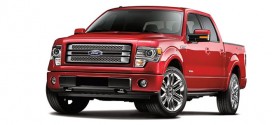Until recently, the most common transmission on new vehicles was the four-speed automatic with overdrive, and all you needed to know about an engine’s efficiency was counting the cylinders it had.
Many new cars for 2013, though, are getting enhancements that help them achieve better gas mileage. Thanks to new government rules that are forcing cars to be more efficient, along with more consumers wanting fuel-sipping cars and trucks, automakers are increasingly applying their engineering talent to a new goal: squeezing the most mileage from every drop of gas.
ENGINE TECH
One way they’re doing it is by making changes under the hood.
A few years ago, any small, four-cylinder engine would get good mileage, but today there can be drastic differences in fuel consumption between similar sized cars with similar sized engines.
The difference comes from how each engine uses the fuel it’s given. The newest and most oft-praised engine designs use direct gasoline or diesel injection to produce more power and get better gas mileage. It’s an improvement over the older style fuel injection, making the gas delivery more precise and hence more efficient.
If you’re shopping for a new car, ask if the engine has direct injection. Often times you will find direct-injected engines get better gas mileage and make more power, so they’re worth a price premium on many models.
TRANSMISSIONS
The other area of new cars that’s evolving rapidly is transmission technology. Ordinary four-speed automatics are still available in some cars, but they’re quickly being replaced by five- and six-speed automatics. Some luxury cars, always wanting to be the first with new ideas, are offering seven- and eight-speed automatics today.
The reason is that additional gears can help save fuel. They might allow the engine to turn at lower RPMs on the highway, for example, or shift at points that are slightly more fuel efficient.
By combining computer processors with more gears in the transmission, the engine is able to shift at just the right moment to provide the best combination of comfort, performance and fuel usage.
For something totally different, many small cars are offering a continuously variable transmission (CVT) that doesn’t have “gears” or shift points at all. They operate on a continuous band, never really shifting at all, which means smooth acceleration and ideal fuel consumption.





